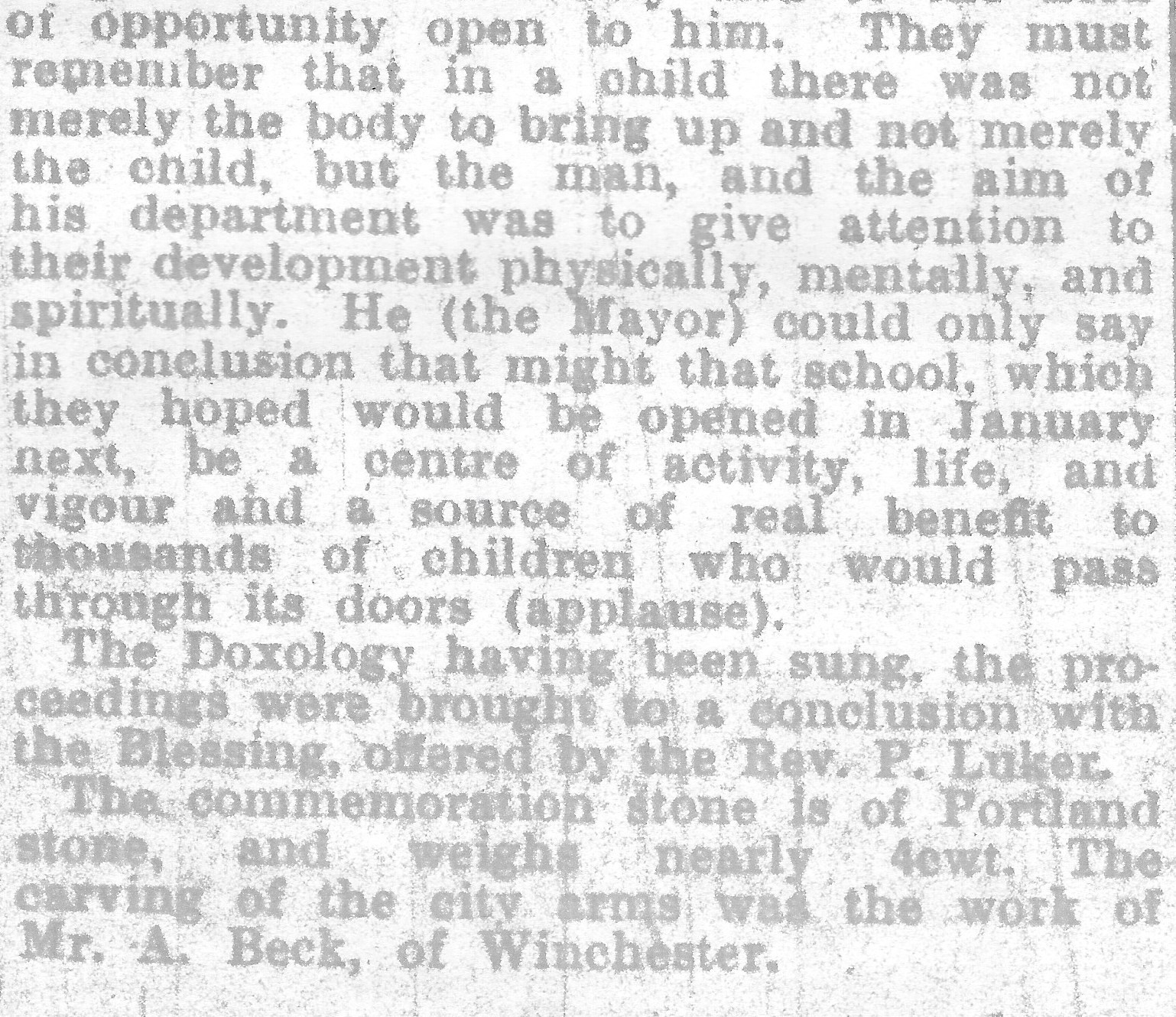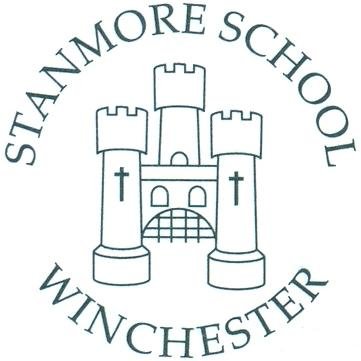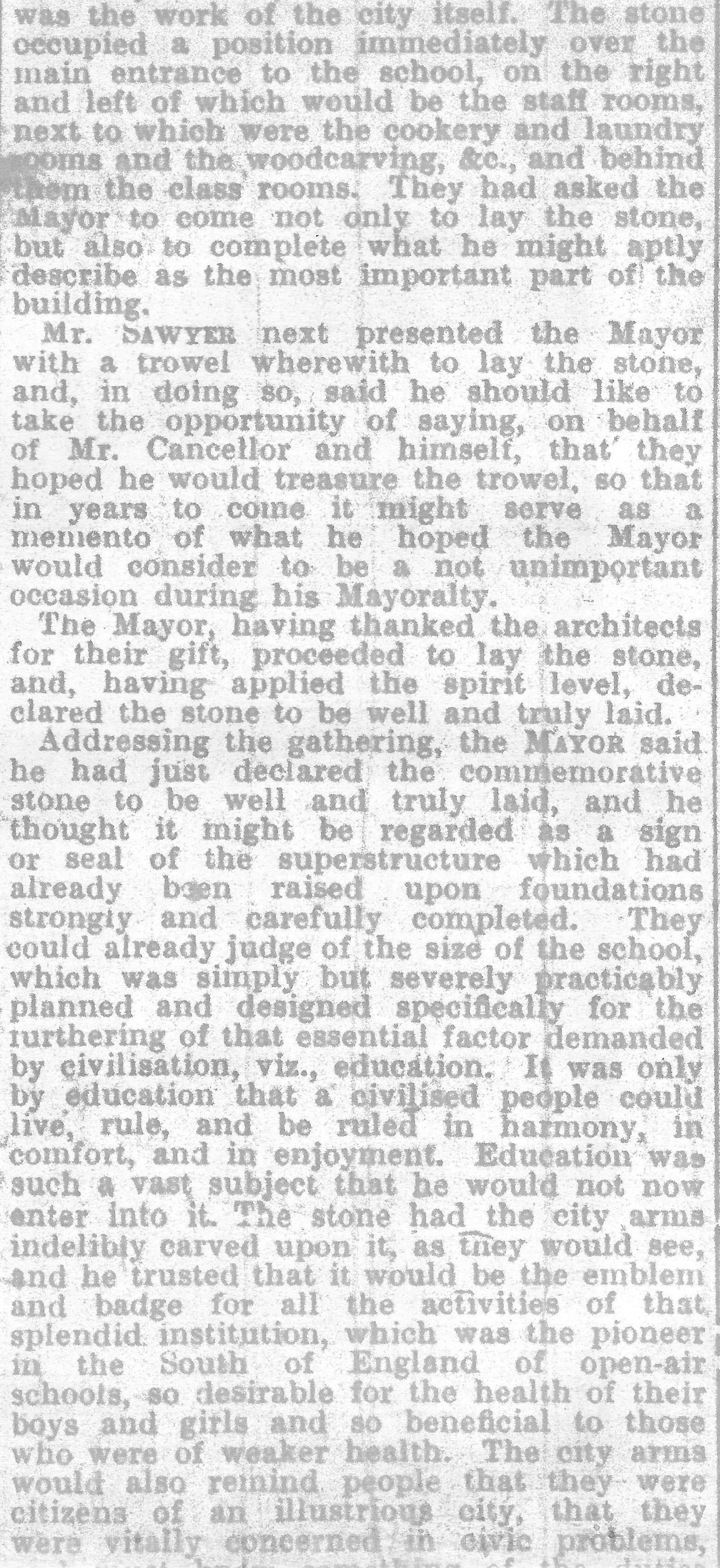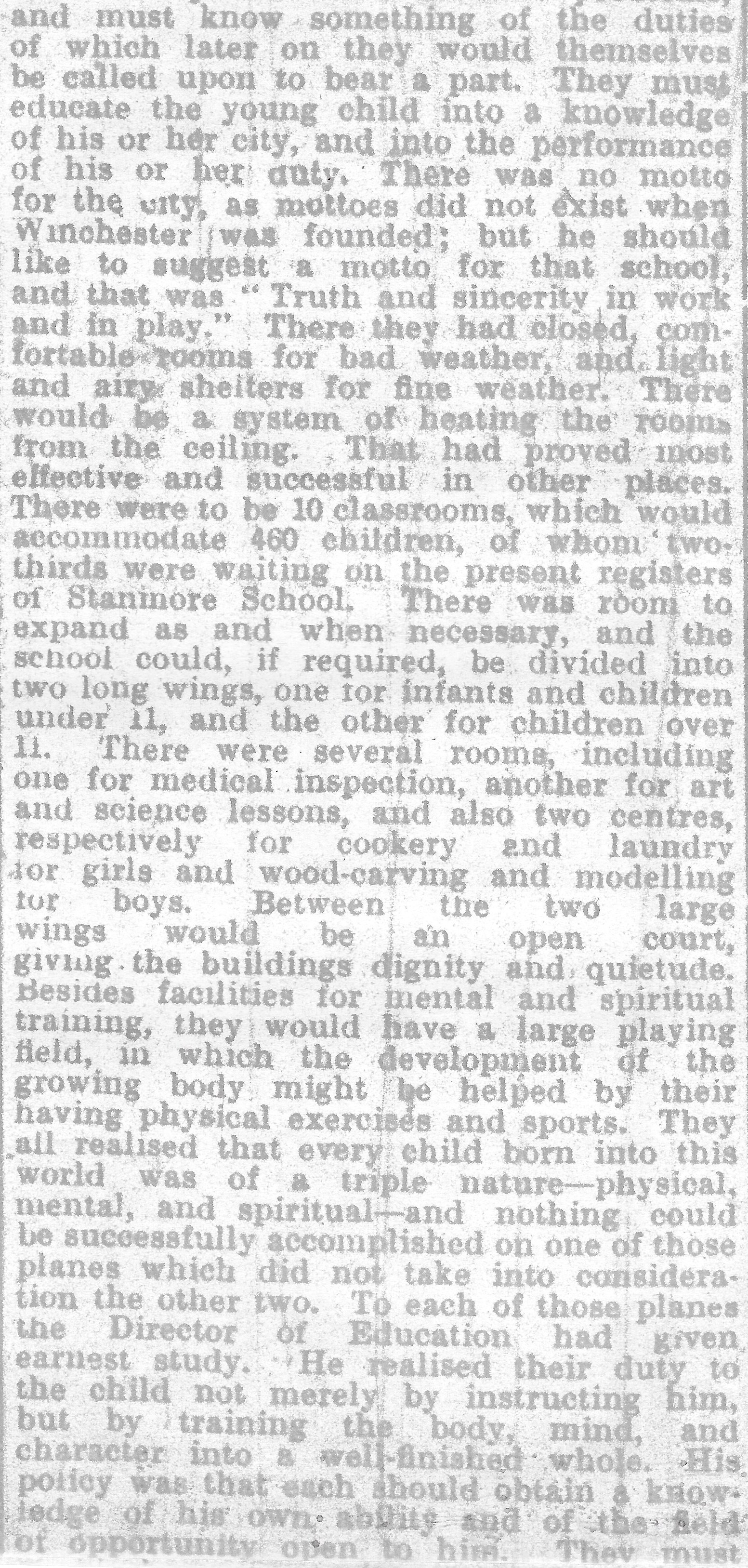The stone laying ceremony - 16 May 1928
Trowel presented to the Mayor of Winchester to commemorate the Stone Laying ceremony on Stanmore School on 16th May 1928.
“City of Winchester, Stanmore School, May 16th 1928, F. Webb Manley. Mayor”

THE NEW STANMORE SCHOOLS, WINCHESTER.
STONE-LAYING CEREMONY BY THE MAYOR.
Another "lap " in the direction of providing adequate educational facilities for the district of Stanmore, Winchester, was completed on Wednesday afternoon when the Mayor (Councillor F. Webb Manley), in the presence of a numerous gathering, including the senior children from the elementary schools of the city laid the commemoration stone in a position immediately over the main entrance to the schools. For this purpose it was necessary for those actually taking part to ascend the scaffolding.
The proceedings were presided over by Alderman A. Edmeades, C.B.E., D.L., with whom was the Mayor, the Rev. J. Glass (Vicar of Christ Church), the Rev. P. Luker (Rector of Weeke), the Rev. J. H. B. Mace (Rector of Holy Trinity), the Rev. R. Sirhowy Jones, Mr. B. D. Cancellor and Mr. H. Sawyer (Messrs. Cancellor and Sawyer, architects), Mr J. A. Peart (Director of Education), Mr. Goodall (builder), &c. Those present below included the Mayoress (Mrs. Webb Manley), Councillor Miss Firmstone, Councillor Ludford, Councillor E. B. Holdaway, Dr. P. T. Freeman, the Rev. H. A. Collins, and many others.
Following the singing of a hymn, Alderman Edmeades presented the architects and builders to the Mayor and, his Worship having formally requested to see the plans of the school, these were produced and explained by Mr. Cancellor, who, on behalf of his partner and himself, expressed gratification that the Mayor should have taken such an interest in that, an important piece of work on behalf of the city. The commemorative stone which he would be asked to lay recorded that not only was it laid in the year 1928, but also that the school, was the work of the city itself. The stone occupied position immediately over the main entrance to the schools on the right and let which would be staff rooms, next to which were the cookery and laundry rooms and the woodcarving, &c., and behind them the class rooms. They had asked the Mayor to come not only to lay the stone, but also to complete what he might aptly describe as the most important part of the buildimg.
Mr. SAWYER next presented the Mayor with a trowel wherewith to lay the stone, and, in doing so, said he should like to take the opportunity of saying, on behall of Mr. Cancellor and himself, that they hoped he would treasure the trowel, so that in years to come it might serve as a memento of what he hoped the Mayor would consider to be a not unimportant occasion during his Mayoralty.
The Mayor, having thanked the architects for their gift, proceeded to lay the stone, and, having applied the spirit level declared the stone to be well and truly laid.
Addressing the gathering, the MAYOR said he had just declared the commemorative stone to be well and truly laid, and he thought it might be regarded as a sign or seal of the superstructure which had already been raised upon foundations strongly and carefully completed. They could already judge of the size of the school, which was simply but severely practicably planned and designed specifically for the furthering of that essential factor demanded by civilisation, viz., education. It was only by education that a civilised people could live, rule, and be ruled in harmony, in comfort, and in enjoyment. Education was such a vast subject that he would not now enter into it. The stone had the city arms indelibly carved upon it, as they would see, and he trusted that it would be the emblem and badge for all the activities of that splendid, institution, which was the pioneer in the South of England of open-air schools, so desirable for the health of their boys and girls and so beneficial to those who were of weaker health. The city arms would also remind people that they were citizens of an illustrious city that they were vitally concerned in civic problems, and must know something of the duties of which later on they would themselves be called upon to bear a part. They must educate the young child into a knowledge of his or her city, and into the performance of his or her duty. There was no motto for the city, as mottoes did not exist when Winchester was founded; but he should like to suggest a motto for that school, and that was "Truth and sincerity in work and in play." There they had closed, comfortable rooms for bad weather, and light and airy shelters for fine weather. There would be a system of heating the room from the ceiling. That had proved most effective and successful in other places. There were to be 10 classrooms, which would accommodate 460 children, of whom two thirds were waiting on the present registers of Stanmore School. There was room to expand as and when necessary, and the school could, if required, be divided into two long wings, one for infants and children under 11, and the other for children over 11. There were several rooms, including one for medical inspection, another for art and science lessons, and also two centres, respectively for cookery and laundry for girls and wood-carving and modelling for boys. Between the two large wings would be an open court, giving the buildings dignity and quietude. Besides facilities for mental and spiritual training, they would have a large playing field, in which the development of the growing body might he helped by their having physical exercises and sports. They all realised that every child born into this world was of a triple nature physical, mental, and spiritual and nothing could be successfully accomplished on one of those planes which did not take into consideration the other two. To each of those planes the Director of Education had given, earnest study. He realised their duty to the child not merely by instructing him, but by training the body, mind, and character into all-finished whole. His policy was that such should obtain a knowledge of his own ability and of the field of opportunity open to him. They must remember that in a child there was not merely the body to bring up and not merely the child, but the man, and the aim of his department was to give attention to their development physically, mentally, and spiritually. He (the Mayor) could only say in conclusion that might that school, which they hoped would be opened in January next, be a centre of activity, life, and vigour and a source of real benefit to thousands of children who would pass through its doors (applause).
The Doxology having been sung, the proceedings were brought to a conclusion with the Blessing, offered by the Rev. P. Luker.
The commemoration stone is of Portland stone, and weighs nearly 4cwt. The carving of the city arms was the work of Mr. A. Beck, of Winchester.
The ceremonial trowel came back into the school’s possession in 1996 after the school received this letter offering to sell it to us.





